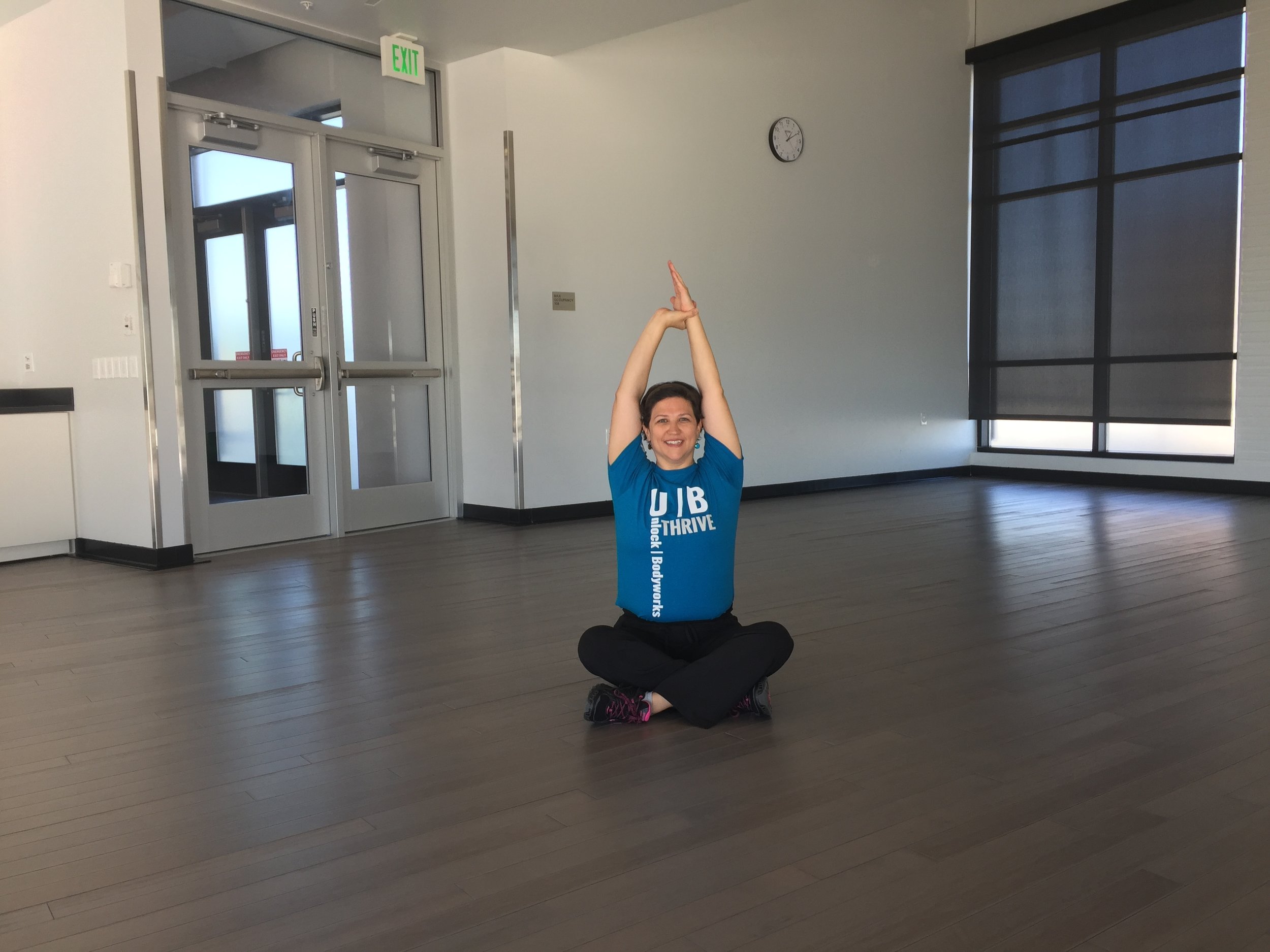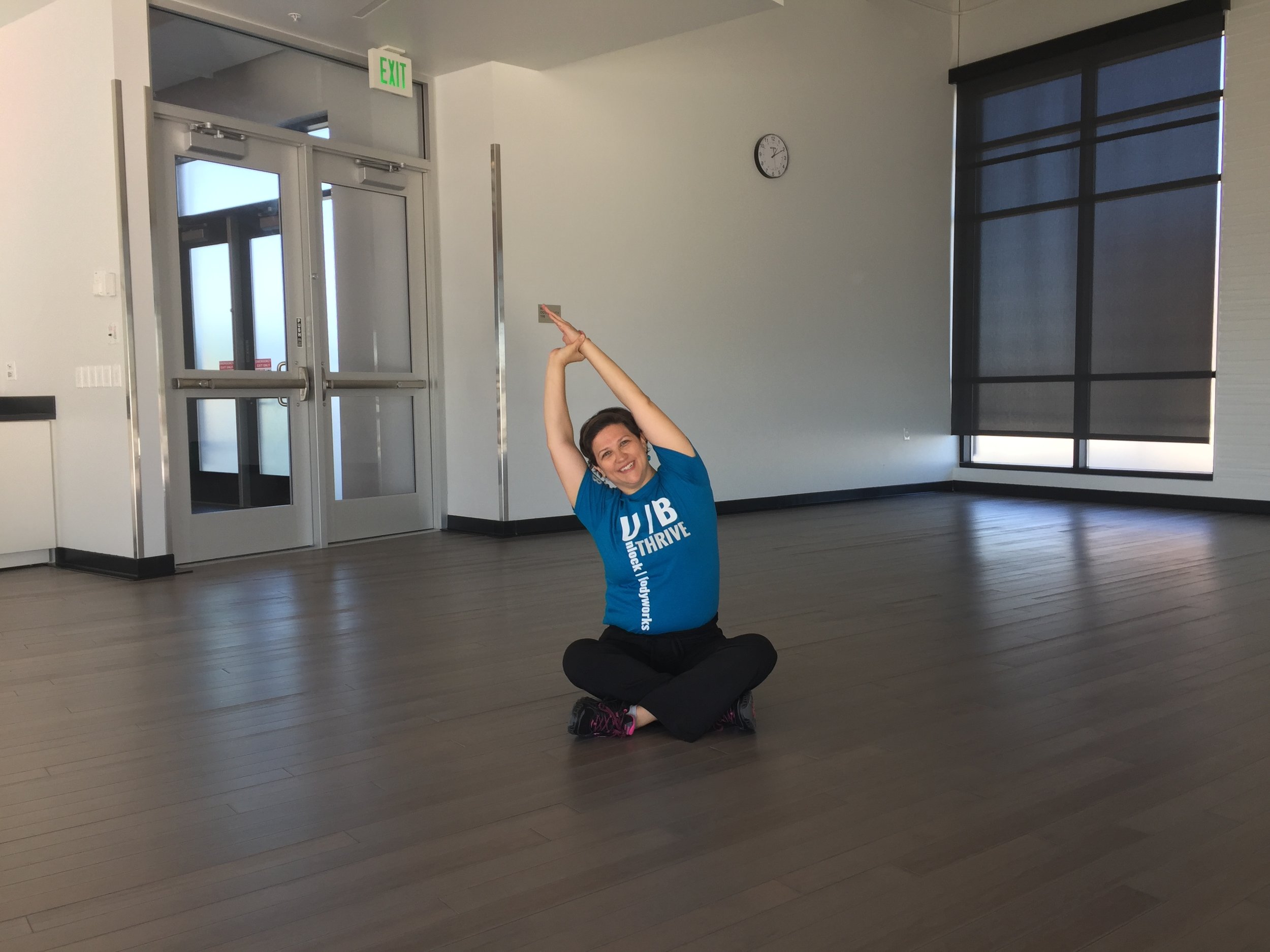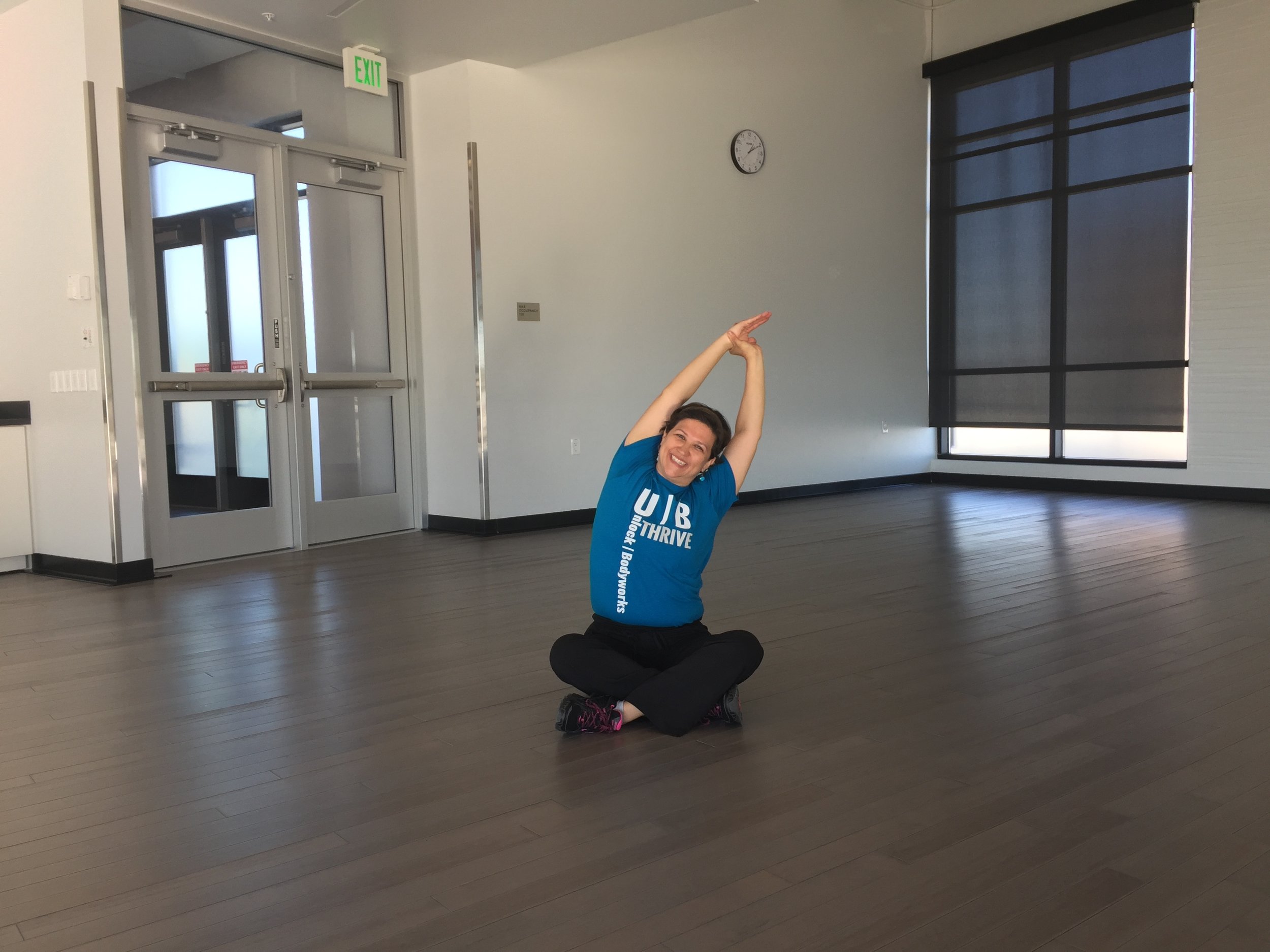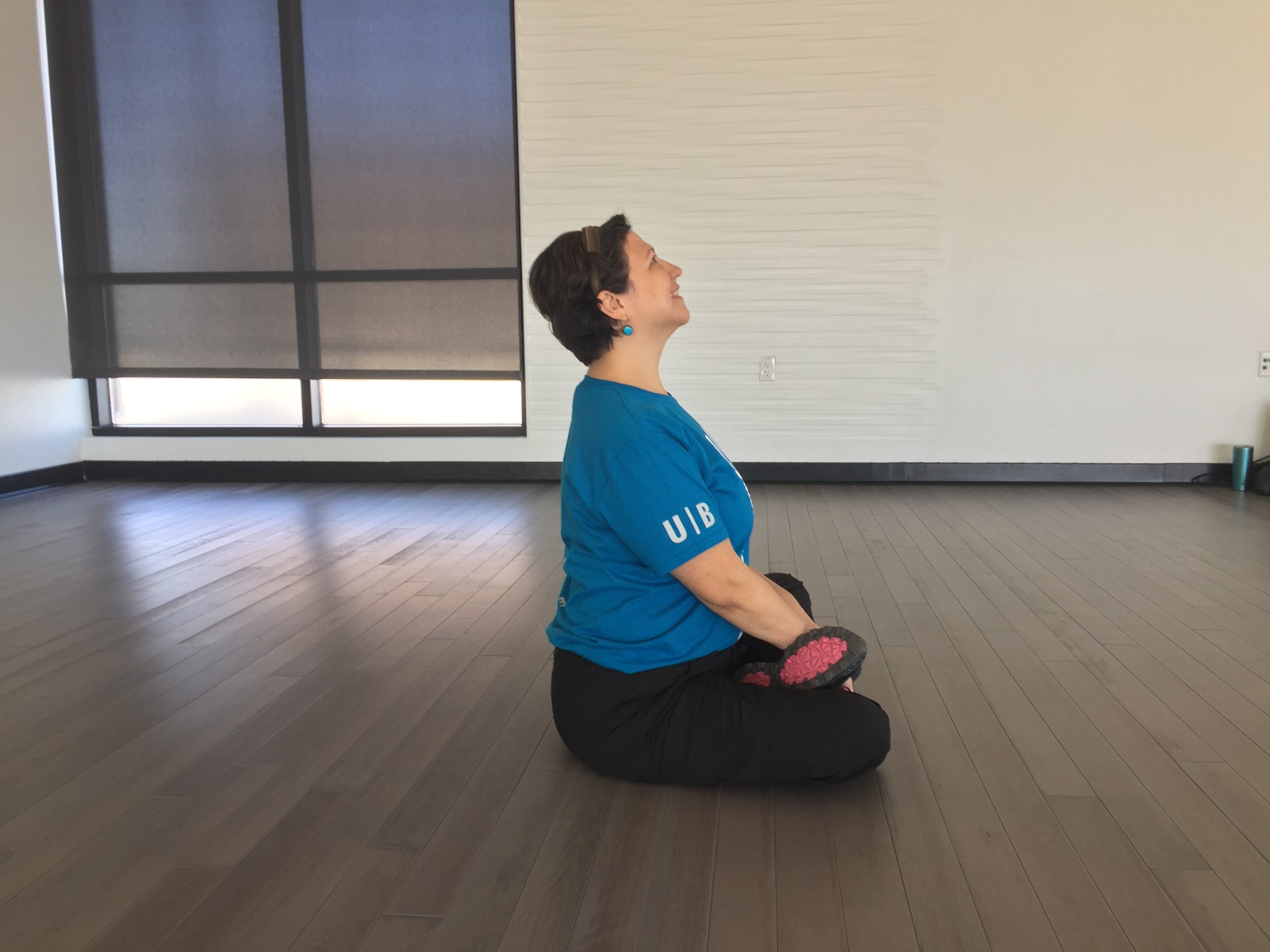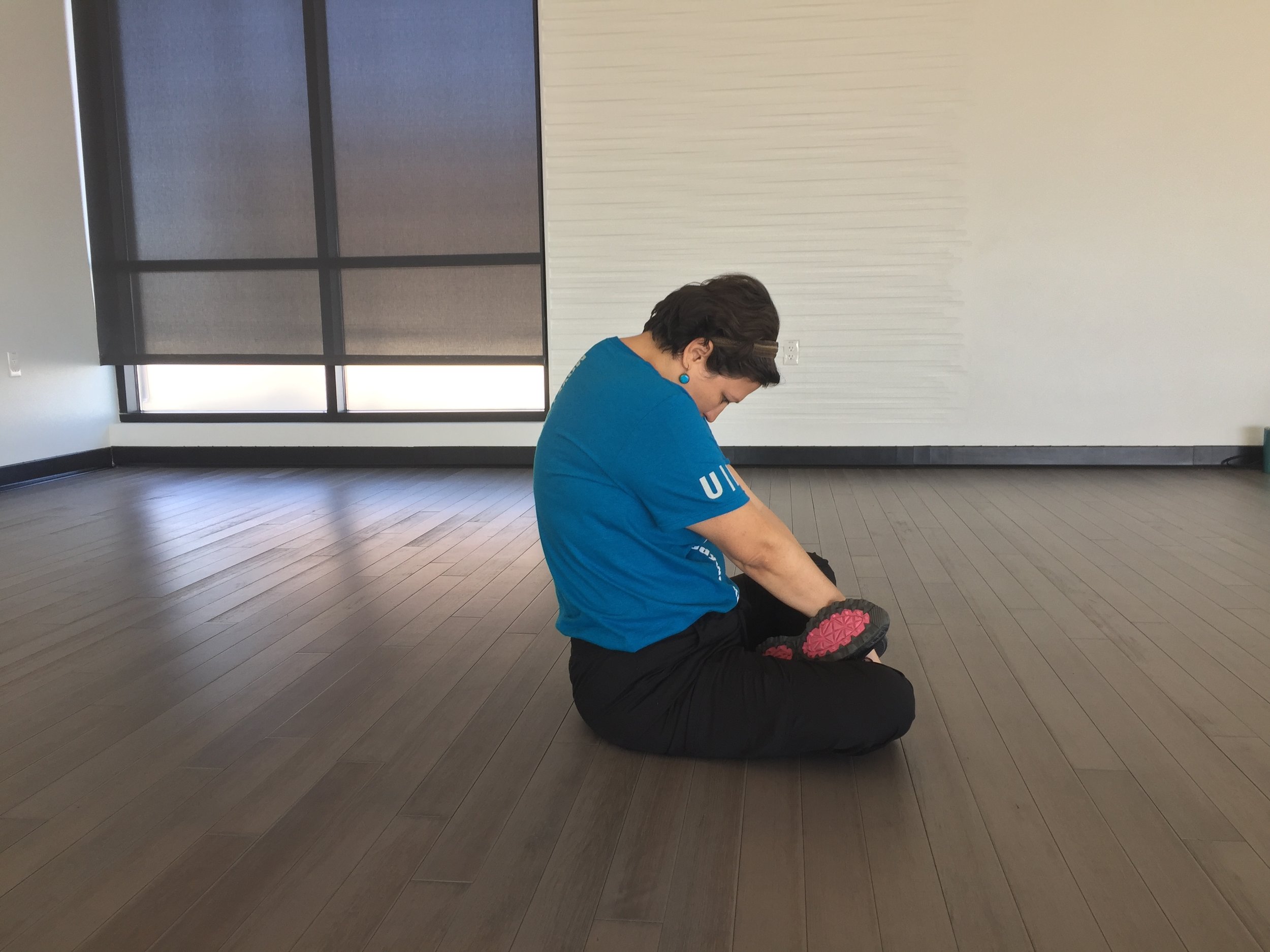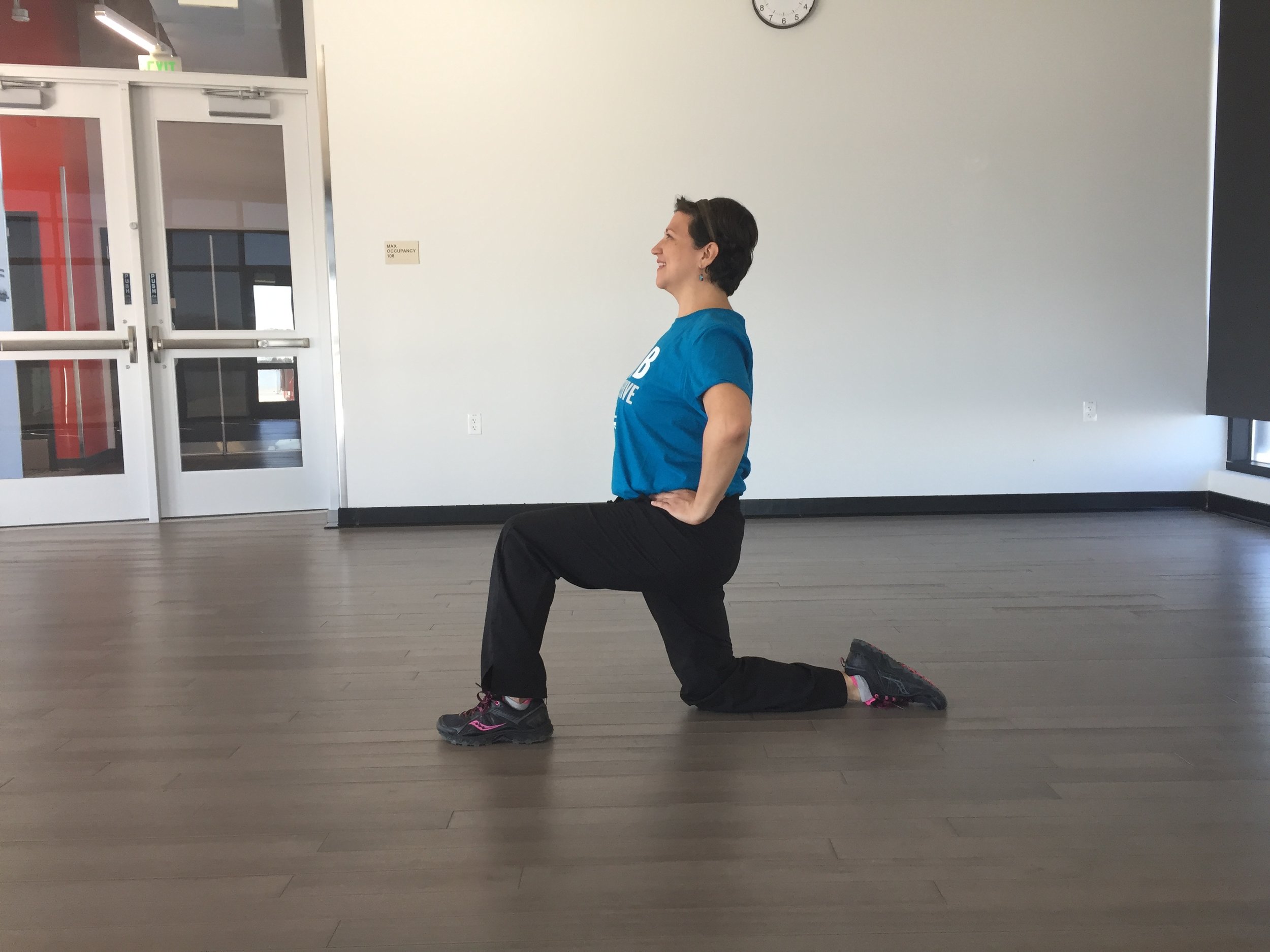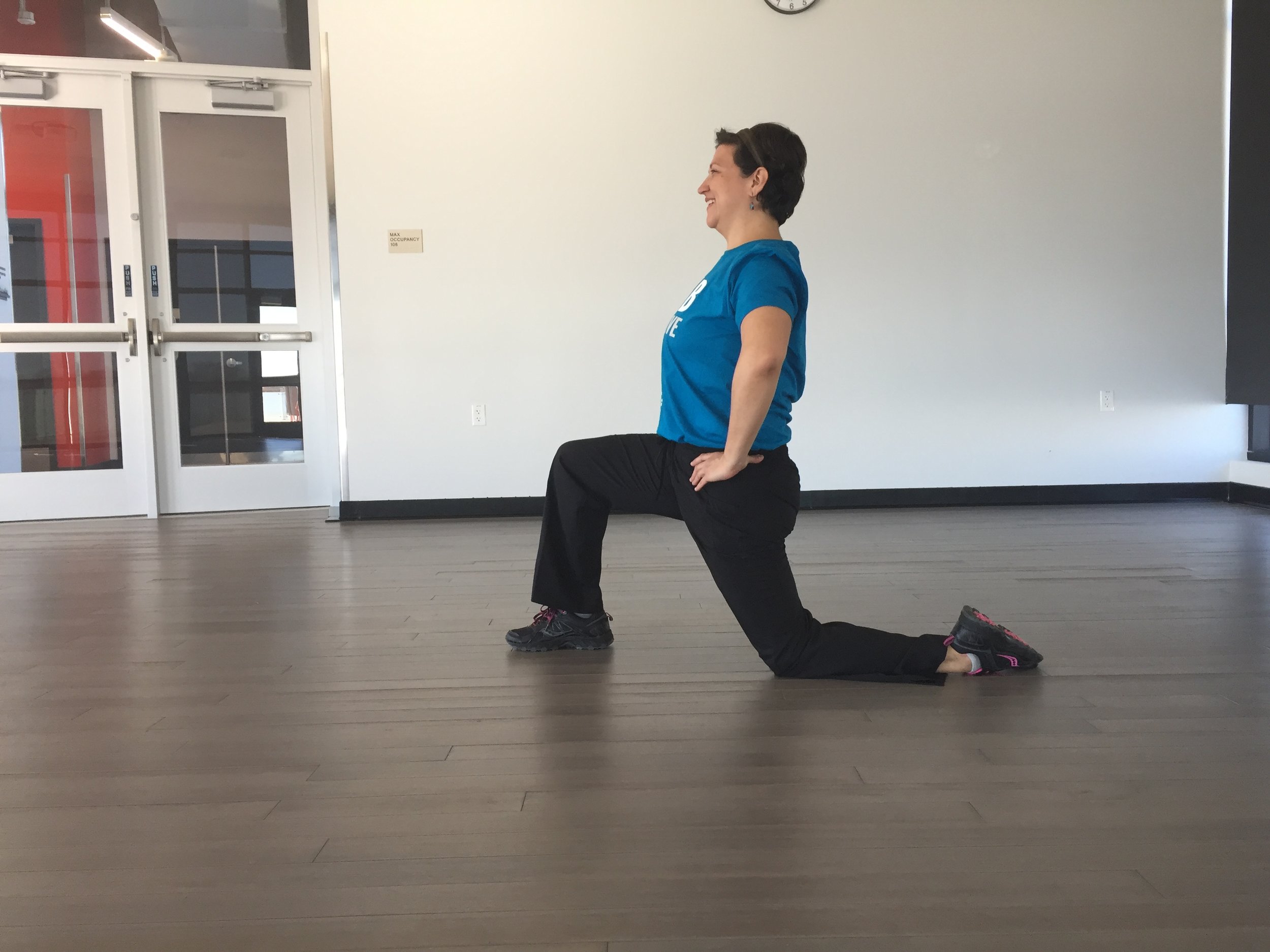Stretch Your Wellness Goals: The Importance of a Daily Stretch Routine
By: Erin Drake, Intern MT at Unlock Bodyworks and Certified Yoga Instructor
To dispel many myths surrounding when and how to stretch, and highlight some of the best benefits of stretching, we offer this quick reference guide so you can create an informed, personalized daily stretch routine. Stretching does not have to take an eternity; in fact, the most productive stretching routines can be completed within 10 to 15 minutes in the comfort of your own home or office.
Things to Remember when Stretching
1. Stretch safely. This means remembering proper joint alignment and stacking. Incorrectly stretching can increase the risk of injury, so be sure to check with a professional to ensure you are using correct form.
2. Stretch when muscles are warm. Contrary to popular belief, stretching is not a warm up. In fact, stretching ‘cold’ muscles can cause injury. A brisk walk is a great warm up before stretching.
3. Avoid static stretching before an intense physical event. Recent research noted by the Mayo Clinic suggests that static stretching before an intense athletic event may inhibit performance. The Mayo Clinic suggests, “instead of static (prolonged, slow) stretching, try performing a ‘dynamic warm-up.’ A dynamic warm-up involves performing movements similar to those in your sport or physical activity at a low level, then gradually increasing the speed and intensity as you warm up.”[1]
4. Keep it simple. Select a routine that is easy for you to remember and easy to duplicate; this way, you are more likely to stick to your routine.
5. Hold the stretch and focus where it feels tight. To get the maximum benefit of a stretch, hold it for 15 to 30 seconds, repeat it three or four times, and focus on the muscles that feel the most sore.
6. Pain is NOT gain. If you are injured, ease up on the area of concern to avoid exacerbating an injury. Be careful not to overstretch a painful area, as this can cause unnecessary microtears in the muscle fibers.
7. Be balanced and symmetrical. In other words, if you do a stretch on one side, then do it on the other to avoid causing muscle imbalance. This applies to the front and back, and from side to side.
8. Keep your routine. Repetition is the key to maximizing the benefits of stretching; the more you stretch, the more your body will respond by increasing your flexibility, circulation, and range of motion.
What are some of the benefits of stretching?
Unsurprisingly, there are several health benefits to practicing a daily stretch routine. We have listed a few of them below.
Physical Benefits
● Increased Circulation: Stretching encourages blood flow circulation to muscle tissue which can improve your performance during movement and activities.[2]
● Improved Flexibility: Stretching involves moving your muscle tissue which ultimately may increase your joint range of motion over time[3].
● Promotes Range of Motion: Improving joint mobility may lessen your risk of physical injury and improve joint health.[4]
● Improved Posture: The alignment of your skeleton and how your soft tissue supports it, determines how well your body can function. Conversely, sitting for long periods of time may compromise your posture and create physical limitations. Stretching daily can combat these imbalances and bring your posture into improved functional alignment.[5]
Mental Benefits
● Stress Reduction: Since most of us carry stress in our muscles, stress may cause soft tissue to shorten, spasm, and/or create trigger points. When practiced frequently, stretching reduces stress and may decrease your risk of creating prolonged muscle tension.[6]
● Mental Clarity: Most stretches can be connected with breathwork to allow for the mind and body to align. Being in the present moment increases mindfulness which is used as a tool in mental health therapies.[7] Stretching creates body awareness, allows the mind to let go of racing thoughts, and gives us permission to focus on the present.[8]
Simple, starter Stretch Routines
1. Lateral side bending (both right & left sides)
Find a comfortable seat on the floor, mat, or firm chair. Draw both shoulder blades downward, inhale and raise your arms above your head. Clasp both hands and lean to the right on your exhale. Inhale, then come back to center. Exhale and then lean to the left. This stretches your side body and your breath opens space between your intercostal muscles (muscles between your ribs). You can also practice this standing.
2. Flexion/Extension (front & back)
Start from a seated position as described in number 1, above. Extend the arms and both hands and lightly hold the legs (the front leg if cross-legged, or knees if sitting in a chair). Sit with a tall spine, navel tucked towards the spine, sit bones reaching into the ground and crown reaching to the ceiling. On an inhale, gently lift the gaze, extend the head and neck, and raise the heart for a tiny back bend. On your exhale, tuck your chin to your chest, round through your spine and let your shoulders come forward. Repeat on your inhales and exhales several times.
3. Low Lunge (Great for sitting all day!)
Bring your left leg forward and plant your left foot on the floor, just next to thumb of your left hand. Make sure your left knee is stacked over your left ankle and do not over extend your left knee past your ankle. Your right quad should be extended slightly so you feel the stretch in your right quad. Bring both hands lightly onto the left thigh (quads). Hold this stretch and breathe for about 20 to 60 seconds. Or, start with a few seconds, switch sides and gradually increase the time in the stretch.
Repeat on the right side.
[1] https://www.mayoclinic.org/healthy-lifestyle/fitness/in-depth/stretching/art-20047931?pg=2&reDate=01112018
[2] Health benefits of physical activity: the evidence. Darren E.R. Warburton, Crystal Whitney Nicol, Shannon S.D. Bredin. CMAJ Mar 2006, 174 (6) 801-809; DOI: 10.1503/cmaj.051351
[3] https://www.mayoclinic.org/healthy-lifestyle/fitness/in-depth/stretching/art-20047931?pg=2&reDate=01112018
[4] Ibid.
[5] Ibid.
[6] https://www.youtube.com/watch?v=sltGyJvbvWw
[7] https://behavioraltech.org/resources/faqs/dialectical-behavior-therapy-dbt/
[8] Alyson Ross and Sue Thomas.The Journal of Alternative and Complementary Medicine.Jan 2010.ahead of print. http://doi.org/10.1089/acm.2009.0044. Published in Volume: 16 Issue 1: January 27,




